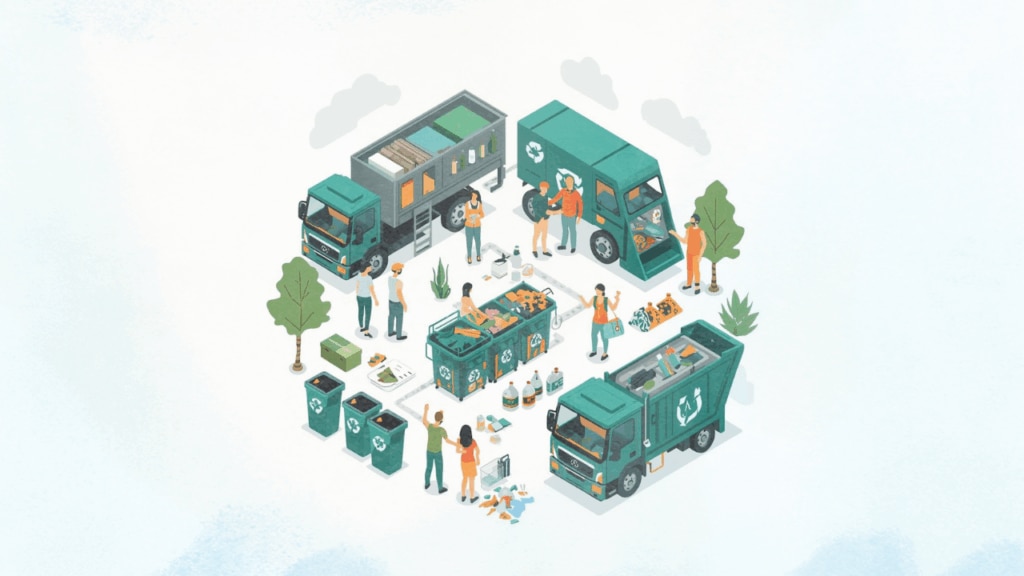Opinion: Unstoppable Renewable Energy, More Heat, and a New Resource – Amherst Indy

Global Progress and Persistent Challenges in Achieving Sustainable Development Goals for Climate and Energy
Advancements in Affordable and Clean Energy (SDG 7)
Global Renewable Energy Milestones
A significant milestone has been reached in the pursuit of SDG 7, with global renewable energy generation surpassing that of coal for the first time. This progress is characterized by two key developments in the first half of 2025:
- For the first time in history, the world’s solar and wind farms generated more electricity than coal plants.
- The growth in renewable electricity generation outpaced the growth in total global electricity demand, resulting in a decline in the use of fossil fuels.
International Leadership and Disparities in Energy Transition
Progress towards SDG 7 is being led by key developing nations, though significant disparities exist globally. The transition highlights the importance of SDG 17 (Partnerships for the Goals) in fostering a worldwide shift to sustainable energy.
- China: Added more renewable energy generation in the first half of the year than the rest of the world combined, leading to a 2% drop in its fossil fuel use.
- India: Substantially increased its renewable electricity generation, resulting in a 3% decrease in coal use and a 34% decrease in gas use.
- United States: In contrast, electricity generation from coal grew by 17% over the same period, indicating a regression from SDG 7 targets.
Economic and Technological Drivers of Clean Energy
The rapid expansion of renewable energy is underpinned by significant advancements in technology and infrastructure, aligning with SDG 9 (Industry, Innovation, and Infrastructure).
- Cost Reduction: The cost of solar photovoltaic panels has decreased by 90% in the last decade, while the cost of onshore wind turbines has fallen by 70%.
- Energy Storage Innovation: The price of batteries has fallen by 90% over the past decade, with corresponding improvements in quality, addressing the intermittency of solar and wind power.
Urgent Need for Enhanced Climate Action (SDG 13)
Current Status of Global Emissions
Despite progress in renewable energy, current efforts are insufficient to meet the targets for SDG 13. The global community is not on track to achieve the goals set by the 2015 Paris Agreement.
- The Paris Agreement calls for a 43% reduction in greenhouse gas emissions by 2030, but global emissions have not yet begun to fall.
- In 2024, global emissions increased by 0.8%.
Escalating Climate Impacts on Ecosystems and Communities
The failure to curb emissions has resulted in severe environmental consequences, threatening SDG 11 (Sustainable Cities and Communities), SDG 14 (Life Below Water), and SDG 15 (Life on Land).
- Record Temperatures: The last decade has been the hottest on record, with 2024 being the hottest year.
- Ocean Health: Ocean heat has reached record levels, causing disastrous effects on marine life and coral reefs.
- Cryosphere Decline: Sea ice in both the Arctic and Antarctica has retreated to record lows.
- Extreme Weather: Warmer seas have produced more intense hurricanes, and unprecedented forest fires, heatwaves, and droughts have occurred globally.
- Deforestation: Forest loss has worsened, with an annual loss of approximately 20 million acres over the last decade.
Fostering Global Partnerships and Local Engagement (SDG 17 & SDG 11)
Global Advocacy and Collaboration
A global network of advocates for climate action exists in nearly every nation. This widespread support is crucial for building the partnerships required under SDG 17 to accelerate the transition to a sustainable future.
Localizing Climate Data to Foster Community Dialogue
New tools are available to help communities understand their local climate risks, supporting the resilience-building objectives of SDG 11. The Climate Central tool provides localized data on climate change impacts.
- The tool allows users to input a location and receive information on changes related to rainfall, sea level rise, heat waves, and other climate-related impacts.
- This data can serve as a foundation for community-level conversations and action on climate change adaptation and mitigation.
1. Which SDGs are addressed or connected to the issues highlighted in thearticle?
- SDG 7: Affordable and Clean Energy: The article’s primary focus is on the global surge of renewable energy (solar and wind), its increasing affordability, and its role in displacing fossil fuels like coal and gas.
- SDG 13: Climate Action: The entire article is framed within the context of climate change, discussing greenhouse gas emissions, the Paris Agreement, global warming impacts, and the urgent need for climate action.
- SDG 11: Sustainable Cities and Communities: The article touches upon the impact of climate-related disasters on communities, citing specific examples of costly storms and providing a tool for citizens to understand local climate impacts.
- SDG 14: Life Below Water: The text explicitly mentions the negative effects of climate change on marine ecosystems, including record ocean heat, its impact on coral reefs and marine life, and the retreat of sea ice.
- SDG 15: Life on Land: The article highlights the worsening problem of deforestation and the impact of destructive forest fires, which are key concerns of this goal.
- SDG 9: Industry, Innovation, and Infrastructure: The discussion on the technological revolution in clean energy, including the dramatic cost reduction of solar panels, wind turbines, and batteries, relates to innovation and the development of sustainable infrastructure.
2. What specific targets under those SDGs can be identified based on the article’s content?
SDG 7: Affordable and Clean Energy
- Target 7.2: By 2030, increase substantially the share of renewable energy in the global energy mix. The article directly addresses this by stating that in the first half of 2025, “the world’s solar and wind farms generated more electricity than coal plants for the first time in history” and that the growth in renewable electricity “outpaced the growth of demand for electricity.”
- Target 7.a: By 2030, enhance international cooperation to facilitate access to clean energy research and technology… and promote investment in energy infrastructure and clean energy technology. The article highlights this through the leadership of China and India in renewable energy expansion and notes that China will lead in “its domestic installations and its exports to other nations.” The dramatic cost reductions in solar panels, wind turbines, and batteries also point to advancements in clean energy technology.
SDG 13: Climate Action
- Target 13.1: Strengthen resilience and adaptive capacity to climate-related hazards and natural disasters in all countries. The article underscores the need for this by listing the dire consequences of climate change, such as “more intense hurricanes,” “unprecedented destructive forest fires,” “deadly heat and droughts,” and “10 disasters from storms that each caused more than a billion dollars of damage” in Massachusetts.
- Target 13.2: Integrate climate change measures into national policies, strategies and planning. The article contrasts the actions of different nations, pointing out that the “Trump administration is cancelling renewable energy projects and promoting coal and gas in the U.S.,” while China and India are leading a surge in renewables. This highlights the critical role of national policies in meeting global climate goals like the Paris Agreement’s call for a “43% reduction in greenhouse gas emissions by 2030.”
SDG 11: Sustainable Cities and Communities
- Target 11.5: By 2030, significantly reduce the number of deaths and the number of people affected and substantially decrease the direct economic losses relative to global gross domestic product caused by disasters. The article provides a concrete example of economic loss by stating, “in the last 20 years, Massachusetts has had 10 disasters from storms that each caused more than a billion dollars of damage.”
SDG 14: Life Below Water
- Target 14.2: By 2020, sustainably manage and protect marine and coastal ecosystems to avoid significant adverse impacts. The article indicates a failure to meet this target by reporting that “Ocean heat has reached record levels, with disastrous effects on corral reefs and marine life” and that “Sea ice in the Arctic and in Antarctica has retreated to record lows.”
SDG 15: Life on Land
- Target 15.2: By 2020, promote the implementation of sustainable management of all types of forests, halt deforestation, restore degraded forests and substantially increase afforestation and reforestation globally. The article directly addresses this by stating that “Deforestation has gotten worse, not better, in the last 10 years, with permanent forest loss at roughly 20 million acres per year.”
3. Are there any indicators mentioned or implied in the article that can be used to measure progress towards the identified targets?
- Share of renewable energy: The article provides several data points that serve as indicators for Target 7.2. It states that for the first time, renewable energy generation from solar and wind surpassed that of coal. It also provides country-specific data: China’s fossil fuel use dropped by 2%, India’s coal use dropped by 3%, and its gas use dropped by 34%.
- Greenhouse gas emissions: As an indicator for SDG 13, the article mentions that the Paris Agreement goal is a 43% reduction by 2030. However, it notes that progress is negative, as global emissions “have not fallen at all. In 2024 they again increased (by 0.8%).”
- Rate of deforestation: The article provides a direct indicator for Target 15.2 by quantifying forest loss: “permanent forest loss at roughly 20 million acres per year.”
- Economic loss from disasters: For Target 11.5, the article gives a specific monetary value of climate-related damage: “10 disasters from storms that each caused more than a billion dollars of damage” in Massachusetts over the last 20 years.
- Cost of clean energy technology: The article implies an indicator for Target 7.a by detailing the cost reductions that drive the energy transition: “Solar voltaic panels have dropped 90% in cost in the last decade,” “the cost of onshore wind turbines has fallen 70%,” and “The price of batteries has fallen 90% in the last decade.”
- Climate and environmental change metrics: The article lists several indicators of worsening climate change (relevant to SDG 13, 14, and 15), including: “The last 10 years have been the hottest on record, with 2024 the hottest,” “Ocean heat has reached record levels,” and “Sea ice in the Arctic and in Antarctica has retreated to record lows.”
4. Create a table with three columns titled ‘SDGs, Targets and Indicators” to present the findings from analyzing the article.
| SDGs | Targets | Indicators |
|---|---|---|
| SDG 7: Affordable and Clean Energy | 7.2: Increase substantially the share of renewable energy in the global energy mix. | Global solar and wind generation surpassed coal for the first time; China’s fossil fuel use dropped 2%; India’s coal use dropped 3% and gas use dropped 34%. |
| SDG 13: Climate Action | 13.2: Integrate climate change measures into national policies, strategies and planning. | Global greenhouse gas emissions increased by 0.8% in 2024, failing to meet the Paris Agreement reduction target. |
| SDG 11: Sustainable Cities and Communities | 11.5: Substantially decrease the direct economic losses… caused by disasters. | In Massachusetts, 10 storms in the last 20 years each caused over a billion dollars in damage. |
| SDG 14: Life Below Water | 14.2: Sustainably manage and protect marine and coastal ecosystems. | Ocean heat reached record levels; Sea ice in the Arctic and Antarctica retreated to record lows. |
| SDG 15: Life on Land | 15.2: Halt deforestation. | Permanent forest loss is occurring at a rate of roughly 20 million acres per year. |
Source: amherstindy.org
What is Your Reaction?
 Like
0
Like
0
 Dislike
0
Dislike
0
 Love
0
Love
0
 Funny
0
Funny
0
 Angry
0
Angry
0
 Sad
0
Sad
0
 Wow
0
Wow
0














































































